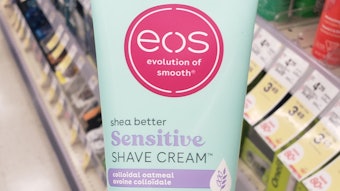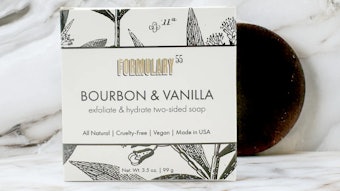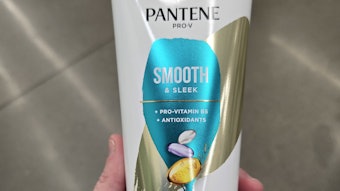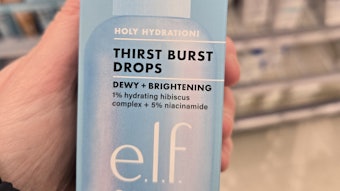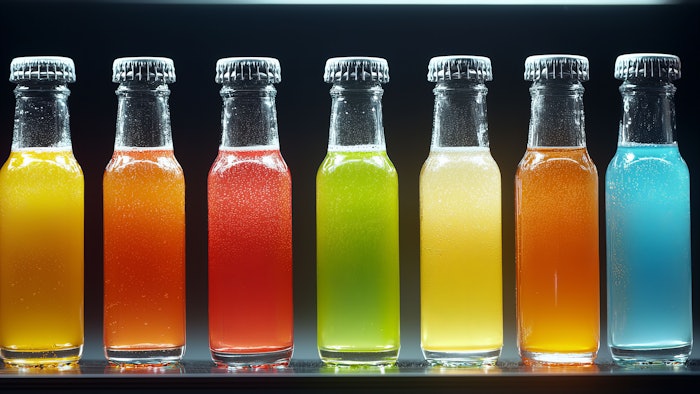
In this month’s column we evaluate ingredients from MANE, a family business founded in 1871 when Victor Mane started producing fragrant materials from regional flowers and plants. MANE is recognized as a major producer of flavors and fragrances, based in Le Bar-sur-Loup in France.
Organoleptic Evaluation Panelists
Log in to view the full article
In this month’s column we evaluate ingredients from MANE, a family business founded in 1871 when Victor Mane started producing fragrant materials from regional flowers and plants. MANE is recognized as a major producer of flavors and fragrances, based in Le Bar-sur-Loup in France.
Organoleptic Evaluation Panelists
- Dr Andrea Albertino, Senior Flavorist, Esarom
- Trevor Groome, Consultant Flavorist – Director, Orchid Aromatech Ltd
- Dr Bimal Karmakar, Principal Flavorist, Givaudan
- Britta Nobis, Senior Flavorist, Silesia
- Dr Maria Palassarou, Flavorist, Givaudan
- Dr Ján Peťka, Head of Flavor Development, Austria Juice
- Aine Walsh, Principal Flavorist, Keurig Dr Pepper
Rum Pure Jungle Essence
Botanical Name: Saccharum officinarum.
CAS #91770-72-8, 91722-22-4 or 90604-30-1, EINECS #294-859-0, FDA GRAS COMPLIANT (21 CFR 182.20).
Odor Descriptors @100%: Alcoholic, rummy, cognac, whiskey notes, ethereal, phenolic, smoky, fermented, fusel, estery, brown caramel notes, tobacco, leathery.
Taste Descriptors @10ppm: Alcoholic, rummy, whiskey notes, ethereal, fermented, fusel, phenolic, smoky, sweet caramel notes, tobacco, woody, slight burnt, plastic acrylate notes.
Possible applications: Its powerful fermented, fusel element would complement alcohol tonalities such as whisky, tequila and wine, whereas its additional phenolic, woody character would provide complexity to alcohol profiles such as cognac, brandy, bourbon and rum. The smoky, woody aspect would fit well on vanilla and charred cask flavors, but also spice blends like cinnamon. Its sweet notes would make it a great addition to various brown tonalities, like caramel, and in combination with its tobacco notes, would complement dried fruit profiles, like fig and raisin.
Antillone (natural)
Chemical Name: 9-decen-2-one.
FEMA #4706, CAS #35194-30-0.
Odor Descriptors @100%: Estery, ethereal pungent, tropical, pineapple notes, fruity, fatty, soapy, waxy, green, melon skin, cucumber notes.
Taste Descriptors @10ppm: Estery, tropical, pineapple notes, fruity, sweet, juicy, green, fatty, waxy, soapy, slight floral, melon skin, slight metallic, plastic acrylate note.
Possible applications: Its intense ethereal, estery note would complement all tropical fruit profiles, like pineapple and jackfruit, and also more sulfur tropical ones, like durian. The fruity, estery element in combination with the sweet, juicy notes would make it a great addition to “tutti fruitti” flavors, but also orchard fruit profiles, like pear and apple. Moreover, its waxy, soapy character would provide complexity to melon and watermelon flavors, but also more green profiles, like cucumber.
 The Vanilla Bourbon Infusion ingredient can be used in vanilla applications as well as coffee and cocoa profiles.karepa at Adobe Stock
The Vanilla Bourbon Infusion ingredient can be used in vanilla applications as well as coffee and cocoa profiles.karepa at Adobe Stock
Vanilla Bourbon Infusion
Botanical Name: Vanilla planifolia syn vanilla fragrans.
FEMA #3105, CAS #8047-24-3, 8024-06-4 or 84650-63-5.
Odor Descriptors @100%: Phenolic, beany vanilla, woody, sweet, brown caramel notes, balsamic, tonka, hay, creamy, powdery, slight animalic notes.
Taste Descriptors @0.2%: Beany vanilla, sweet, brown caramel notes, phenolic, smoky, woody, rummy, tonka, balsamic, cocoa, creamy, anisic notes.
Possible applications: Its characteristic phenolic, woody aspect would complement all vanilla tonalities, from beany vanilla to more sweet creamy profile. The additional sweet caramellic notes would make it a great addition to all brown flavors, like caramel, cocoa, chocolate and coffee profiles. The phenolic, slight animalic note could fit well on dairy flavors, in combination with its creamy aspect. Moreover, the balsamic, hay element would benefit coumarinic coconut and tonka bean flavor profiles.
Vanilla Indonesia Infusion
Botanical Name: Vanilla planifolia syn vanilla fragrans.
FEMA #3105, CAS #8047-24-3.
Odor Descriptors @100%: Beany vanilla, sweet, brown, phenolic, woody, slightly smoky, tonka, balsamic, creamy, powdery, anisic, rummy, burnt notes.
Taste Descriptors @0.25%: Beany vanilla, sweet, brown caramel notes, phenolic, woody, smoky, creamy, nutty, powdery, slight rummy, anisic, slight burnt notes.
Possible applications: Its intense phenolic, woody, smoky character would complement all vanilla bean profiles, but also alcoholic tonalities, like whisky, rum and brandy. Its characteristic sweet, creamy, balsamic notes would make it a great addition to all brown flavors, like caramel, maple, cocoa, chocolate and coffee profiles, and also sweet dairy tonalities. Moreover, the sweet, woody notes could make it a great addition to dried fruit profiles, like fig and raisins.
Pink Pepper Pure Jungle Essence
Botanical Name: Schinus terebinthifolia, Syn. Schinus terebinthifolius.
CAS #949495-68-5, EINECS #481-880-7, FDA GRAS COMPLIANT (21 CFR 101.22).
Odor Descriptors @100%: Pungent, spicy, peppery, green, herbal, bell pepper notes, terpenic, citrus, floral, woody, slight metallic, animalic notes.
Taste Descriptors @2ppm: Spicy, peppery, green, bell pepper notes, terpenic, piney, resinous, woody, floral, slight metallic, citrus notes burning, tingling sensation.
Possible applications: Its sharp peppery notes would complement all spice blends and herbal mix profiles, whereas its characteristic green, metallic element would be a great addition to bell pepper flavors and various vegetable tonalities. The green, terpenic aspect would make it also a great fit to tropical fruit profiles, like mango and passion fruit, whereas the additional woody, piney notes could benefit citrus flavors, like lime and grapefruit, as well as alcoholic tonalities, like gin. Moreover, its burning, tingling sensation would give complexity to ginger flavors.
Timur Pepper
Botanical Name: Zanthoxylum, ext. / Zanthoxylum alatum, ext.
CAS #102242-62-6 or 91770-90-0, EINECS #294-877-9, FDA GRAS COMPLIANT (21 CFR 101.22 & 21 CFR 182.20).
Odor Descriptors @100%: Tropical, guava, passion fruit notes, fruity, juicy, sulfur notes, hop notes, slight green metallic, spicy, peppery, floral, creamy, slight fatty.
Taste Descriptors @10ppm: Tropical, passion fruit, guava notes, floral, spicy, peppery, citrus peel, fruity, ripe, aldehydic, fatty, sulphur notes.
Possible applications: Its dominant fruity, sulfur character would complement all tropical fruit profiles, like passion fruit, guava and mango, but also provide complexity to stone fruits like peach and apricot. The juicy, ripe elements would benefit orchard fruit flavors, whereas its spicy, peppery aspect would fit well to citrus grapefruit profiles, spice blends and cola flavors.
 The fatty, oily aspect of Maxitrus might complement savory profiles, such as chicken.fahrwasser at Adobe Stock
The fatty, oily aspect of Maxitrus might complement savory profiles, such as chicken.fahrwasser at Adobe Stock
Maxitrus
Chemical Name: 6-methyl octanal.
FEMA #4433, CAS #30689-75-9.
Odor Descriptors @100%: Pungent, ethereal, aldehydic, fatty, soapy, fruity, floral, slight estery, sweet, green, citrus orange notes, cucumber skin, melon notes.
Taste Descriptors @1ppm: Fatty, soapy, waxy, oily, aldehydic, citrus orange notes, floral, green, estery, cucumber skin, melon notes, mouth coating, long-lasting sensation.
Possible applications: Its characteristic ethereal, aldehydic element would provide complexity to various citrus tonalities, like orange peel and orange essence oil profiles, folded orange, blood orange and grapefruit flavors. The soapy, green notes would be a great addition to watermelon and melon flavors, as well as cucumber profiles. Moreover, its sweet, estery, floral character could benefit tropical fruits like custard apple and prickly pear, but also sweet herbal elderflower profiles. Lastly, its fatty, oily aspect might also complement savory profiles like chicken, whereas its additional long-lasting sensation could provide a kokumi-type effect.
Gamma Octalactone (natural)
Chemical Name: 2(3H)-Furanone, 5-butyldihydro- / (5S)-5-butyldihydro-2(3H)-furanone.
FEMA #2796, CAS #104-50-7 or 107797-25-1.
Odor Descriptors @100%: Lactonic, coconut, tonka, hay, coumarin notes, toasted, sweet, brown notes, woody, creamy, slightly burnt, oily.
Taste Descriptors @15ppm: Lactonic, coconut, creamy, milky, fatty, oily, dairy notes, coumarinic, tonka, hay, slightly roasted, brown caramel notes, fruity.
Possible applications: The dominant lactonic, creamy character would provide depth and complexity to coconut and dairy flavors, and also stone fruit profiles, like peach and apricot. Its sweet, tonka, coumarinic aspect would benefit brown tonalities, like caramel and chocolate, beany balsamic vanilla profiles, as well as toasted almond flavors. Moreover, the sweet, creamy, lactonic element could be a great fit on tropical plant profiles, like pandan leaf.

